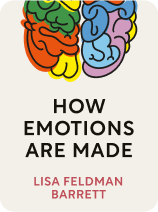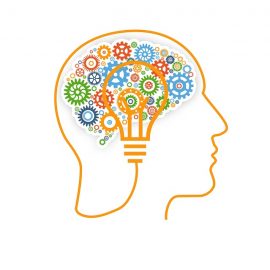

This article is an excerpt from the Shortform book guide to "How Emotions Are Made" by Lisa Feldman Barrett. Shortform has the world's best summaries and analyses of books you should be reading.
Like this article? Sign up for a free trial here.
How are feelings and emotions psychologically different? How do experts explain this difference?
Neuroscientist and psychologist Lisa Feldman Barrett wrote the book How Emotions Are Made after years of psychological research. Feelings and emotions are two distinct concepts, according to Barrett, and understanding the difference could help you feel better, mentally and physically.
Keep reading for Barrett’s explanation of why feelings and emotions are psychologically different.
How Feelings and Emotions Are Different
Myth: Feelings and emotions are two words that mean the same thing.
Reality: Simple feelings of pleasure and displeasure or calmness and agitation are not the same as complex emotional experiences such as joy and sadness. These basic feelings are your body’s internal sensations, whereas emotions are the psychological concepts that your brain assigns to the feelings to give them meaning.
Even though emotions are not the same across cultures, Barrett says that basic internal feelings on a spectrum from pleasure and displeasure and calmness to agitation are universal. These feelings are essentially summaries of your body’s inner state (they’re also called affect). They’re part of an internal process called interoception.
What Is Interoception? Your Inner Sixth Sense
Feeling and emotions may be psychologically different, but they are still connected. In interoception, your brain gets sensory input from inside your body, including information about your heart rate, breathing, blood pressure, temperature, hormones, metabolism, and so on. Then, in a process that Barrett dubs “body budgeting,” your brain makes predictions about what those internal sensations mean in terms of your body’s energy needs, and it regulates the body accordingly—by doing things such as speeding up your heart, slowing down breathing, releasing more cortisol, or metabolizing more glucose.
Interoception is a whole-brain process. This means that the brain is structured so that all of your decisions and actions, no matter how much you believe them to be rooted in logic and reason, are affected by your inner feelings.

———End of Preview———
Like what you just read? Read the rest of the world's best book summary and analysis of Lisa Feldman Barrett's "How Emotions Are Made" at Shortform.
Here's what you'll find in our full How Emotions Are Made summary:
- A deep dive into what emotions really are and where they come from
- How some cultures have different emotions than others
- The difference between feelings and emotions






